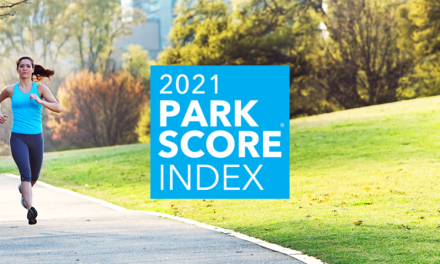In 2008, former design director of the National Endowment for the Arts, architect, planner, and author Jeff Speck suggested that Memphis should return traffic to Main Street’s pedestrian mall. Buffalo is doing just that, recognizing that the vision for its pedestrian mall never came to life and killed what life it did have. We’re posting an update on the Buffalo project below, and here’s some of what we wrote six years ago about Mr. Speck’s recommendation:
“It may sound like too little too late. After all, the mall has already strangled the life out of what Main Street used to be and turned the teeming street into modest pockets of activity in an area begging for vibrancy and animation. Is it only a pipe dream that traffic would inject some renewed economic life into a street whose only retail store between Union and Poplar is the beloved peanut shop? We didn’t come to share Mr. Speck’s opinion easily, but at this point, it just seems like it’s worth a try. After all, it’s not like he proposed turning Main Street into the autobahn or even turning it back like it used to be. Rather, he recommended two lanes of slow-moving traffic.
“We remember when Main Street bustled. There’s no question that it would have in time been transformed by the shift in consumer loyalty to suburban malls, but like subsequent trolley construction, mall construction and reconstruction often killed off the very businesses that it was designed to support. Shoppers abandoned downtown pedestrian malls across the U.S. as inconvenient and inaccessible, and Memphis was no exception. In our defense, we were not the only city that chased the pedestrian mall as the answer to our downtown’s ability to compete with suburban malls. About 200 cities flirted with malls for a few blocks and some like us consummated the relationship with our entire main downtown shopping district.
“While a few pedestrian malls remain and are thriving, they seem to be largely located in college towns. In big cities like ours, the trend is much more to returning some traffic to the malls. In a study of malls built in the 1960s and 1970s in Santa Monica, Eugene, Oak Park, Sioux Falls, Vicksburg, Baltimore, Ithaca, Memphis, Miami Beach and St. Joseph, it was found that 70 percent of them were successful for a few years but then business declined. By 1989, half of them had either totally or partially opened up their pedestrian malls to traffic and two more were thinking about it.”
From CityLab:
No One Knows When Buffalo’s Pedestrian Mall Overhaul Will Be Finished
With funding arriving on a block-by-block basis, everyone is eager to see if bringing cars back to Main Street will finally make a difference.
When Buffalo built its pedestrian mall in the 1980s, it was supposed to make downtown look like this:
That vision never came to life. A lengthy construction process and a design that not only took cars off the street but blocked off key intersections killed the little bit of life that remained on Main Street. As a result, a typical day up and down the pedestrian mall looks more like this:
After years of nearly universal displeasure with the car-free mall, it’s going away, albeit block by block. And very slowly.
City officials hope that when the construction dust clears, cars and most importantly, private investment will return to the heart of downtown. “We have a number of priorities when it comes to Buffalo’s infrastructure,” says Mayor Byron Brown. “This is a major, major priority.”
A public works project called Cars Sharing Main Street has been underway since 2008. Phase one saw two-way traffic, bike lanes, and newly designed sidewalks with curb extensions brought to the 700 block of Main Street.
Serving as the last block of Main where cars were allowed before the mostly underground light rail reached street level, the block had been designed to shoo away drivers with slow, one-way traffic and perpendicular street parking just before the subway tunnel emerged. Finished in 2009, the redesign was well received and validated through property renovations and new businesses along the block.

Five years later, it is still the only portion of Main with a completed redesign, but construction workers have been busy turning the 600 and 500 blocks into something similar. The 600 block, the center of the city’s theater district, will reopen later this year. Work on the 500 block, arguably the most blighted portion of the pedestrian mall, is expected to wrap up in 2015.
When today’s construction is done, downtowners will have a better sense of how a fully redesigned Main Street will function.
Gone will be the long, clunky light rail stations that block storefronts from easy viewing. Smaller, more transparent shelters will replace them. Bicycles will have dedicated lanes. Pedestrians will have new benches and better signage to navigate their way around downtown.
The most dramatic change will be the addition of private vehicles. Cars will share the road with a light rail system that’s never had anything but an exclusive right-of-way from end to end. That comes with some complications.

The most difficult engineering work needed to re-integrate cars on Main has already been done. New traffic lanes now weave around both sides of the subway tunnel in the middle of the 600 block before merging into a shared lane with the train. At the merge, “RAILROAD CROSSING” signs now stand accompanied by warning lights that will flash as a train approaches.
Although transit officials can’t promise the transition will be seamless, conductors have been trained for the change, Niagara Frontier Transportation Authority (NFTA) official Thomas George tells us. They’ll be assisted by detection cameras that show conductors still inside the tunnel if there’s an issue on the outdoor track bed.

To accommodate the new merge lanes, the NFTA is losing one of its stations. “Theater” station closed permanently early last year, meaning riders will now get off at “Fountain Plaza” one block away. “The geometry of bringing cars made it literally impossible to maintain that station,” says George.
The station removal has led to negative feedback from some riders, particularly those who are disabled. But it’s hardly the NFTA’s only problem.
A limited light-rail system is a tough sell in a car-centric region where downtown parking is affordable and easy to find. For those dependent on public transit, bus service is more comprehensive. In fact, the underground portion of the light rail essentially functions as an express version of the “8” bus.
Construction has come with severe interruptions to light-rail service, doubling average overhead times from 10 to 20 minutes. “The loss of ridership has been significant” says George, “as much as 25 percent,” while operating at only 33 percent of the system’s capacity.

Right now, the NFTA is working in-house to come up with ways to bring back riders when the dust clears. The mayor, meanwhile, wants to see enough new housing along the light rail system to offset any loss of disgruntled riders today.
Brown has officially stated that he wants to see another 1,300 units of housing built downtown by 2018. He wants Main Street to be one of the biggest clusters of new apartments and condos and is convinced the change is already happening.
Decades after Buffalo’s light rail debuted, only now are developers starting to show serious interest in the vacant and underused buildings along Main Street. Nearly $90 million in residential projects near light rail stations are either planned or under construction. That’s mostly thanks to the Buffalo Niagara Medical Campus (BNMC), located at the southernmost underground light rail station.
The BNMC is one of the few sources of significant job growth in the city today. Expected to generate about half of the city’s projected 10,000 new jobs over the next three to four years, medical campus officials say they won’t build enough parking to accommodate the new workers.
The mayor says a completed Cars Sharing Main program will make Main one of the most holistic streets in New York State, attractive enough to every type of commuter and therefore, developers and new businesses.
The project, Brown says, has given the city a 2-to-1 return on investment so far. City Hall officials expect the ratio to become even more favorable when all the work is done.
But when exactly that’ll happen is anyone’s guess. Right now, the city is hoping for a $28 million TIGER grant to start work on the next phase. That would include the 400 block, where Buffalo’s first modernist tower, the previously vacant Tishman Building, is being turned into a mixed-use complex. It would also include the southernmost end of the pedestrian mall, Canalside, where the historically desolate Inner Harbor is quickly turning into the city’s most popular hangout.

Senator Charles Schumer announced earlier this month that he, along with Congressman Brian Higgins, will push for the money. If they land the TIGER grant, the city will chip in the remaining $7 million necessary and work would begin this fall.
Without the grant, construction stops. “We would, quite frankly, be short,” says Brown. Assuming Buffalo does get the money, that would still leave five blocks in-between untouched and with no funding sources in place. An additional $77 million is needed for those five blocks.
Despite all the uncertainty, most people around the city are happy to see anything happen at all. Across from the Hyatt on the 500 block, a string of long-vacant buildings are being restored and filled with art studios, apartments, offices, and places to eat: the kinds of things that were supposed to happen after the pedestrian mall first debuted.

One of those new places, a coffee shop called Perks, opened in January. Owner Bob Newman is cautiously optimistic about his investment.
Currently, he’s waiting out a frustrating construction period. Much like when the pedestrian mall was being built along the same street in the 1980s, businesses that rely on street traffic are challenged today. Newman says a recent visitor joked that they’d “never walked so far to something so close.”
Lured in by the modest influx of people around downtown more than the upcoming return of cars to the block, he’s skeptical that the redesign alone will change much.
“It will be nice and I’m sure it will help our business but it won’t be the main reason people are here,” says Newman. “We need to remember we were told 25 years ago by the same type of agencies that taking traffic off Main Street would save it.”





Great comments regarding the Main Street Mall. To remind us of the time span that the function, success and sustainability of the Mall have been called into question, let us not forget the oft repeated observation made by Bill Cosby on January 5, 1885 while performing at the Orpheum, “I expected to find a Neiman Marcus or maybe a Sax 5th Avenue. But hey, you people are the only city in the country with a mall for the poor and needy”. However, as in Buffalo, I think a micro approach as opposed to a universal overhaul might be an appropriate approach.
This is simply personal observation and I would hope others would comment with their own opinions: The Mall can effectively be divided into 3 zones. While still pocked with several notable examples of vacant buildings, the section between Union and Peabody Place is noticeably more active with the corollary redevelopment of once vacant buildings, occupied ground level commercial space and a healthy degree of turnover in retail/restaurant establishments. The section between Union and Madison (perhaps as far as Court Square) has seen some reinvestment in adjoining buildings and has seen a recent spate of ground floor spaces occupied by promising stores and restaurants. However, the level of pedestrian activity drops noticeably, a significant number of buildings remain vacant, underutilized and a larger percentage of ground floor commercial space is perpetually vacant. North of Court Square, the number of vacant and underutilized buildings is a vastly more dominant aspect of the Mall. A few exceptions do exist such as the Courtyard Marriott and Court Square Center, but this is often the most consistently “uncomfortable” section a pedestrian is likely to experience along the Mall.
With the above observations in mind, an approach similar to that taken in Buffalo might be in order. Perhaps reintegrating vehicles on the section of Main Street between Adams and Jefferson or even the south side of Court Square would serve as sufficient demonstration blocks. The thought here being that returning cars to the entire length of Main may not be necessary. As seen by the market driven (with ample public financial support) activity experienced on the south end of the Mall, perhaps changing enough variables to create the same level of activity a few blocks to the north will be enough to “ignite” the necessary investment in between.
With the trolleys out of the picture for the foreseeable future, now would be the time to experiment with a full transit mall approach as well. A decline in ridership on the shuttles that are serving as replacements for the trolley has been noted and is hardly surprising. Now could be a time to shift some of the bus service that utilizes Front Street to the Main Street Mall in conjunction with the well-marked (green) trolley substitute shuttles. We should not stop there. As long the trolleys remain out of service, the Mall could serve as a free-fare zone if not for the entire day, then at least during certain periods such as the 11-2 lunch timeframe.
As always, I am certain that I have committed grammar homicide and request patience and leniency.
I would argue that pedestrian focused malls were simply ahead of their time.
In Minneapolis the city is doubling down on a car free environment. They have hired the architects who designed the immensely popular Highline in NYC to design a pedestrian mall for the modern era.
“Architects from James Corner Field now hope to give Nicollet a more contemporary appearance in an era when cities expect their car-free oases to be more than just a simple separation of uses.”
Rather than reverting to old paradigms the city, as is it nature, is forging a future gathering space not defined exclusively by auto exhaust.
http://www.citylab.com/cityfixer/2014/06/minneapoliss-most-famous-street-gets-ready-for-a-makeover/372878/
Peter-
I would agree that in a perfect world, pedestrian malls would be an instant hit. However, even in the case of the Nicollett Mall , we are not discussing a new pedestrian mall. Instead, Minneapolis is planning to invest tens of millions in an existing pedestrian/transit mall that has yet to fulfill its perceived potential since its original opening in the 1960s and even after a major renovation in the 1990s. It appears the primary variable they will target will be creating new connections between the city’s famed and heavily used skyway system and the mall itself in the hopes of injecting pedestrians into the lightly used space.
I see a lot of interesting posts on your website. You have to spend a lot of time writing, i know how to save you a lot
of work, there is a tool that creates readable, SEO friendly articles in couple of minutes, just type in google – k2 unlimited content